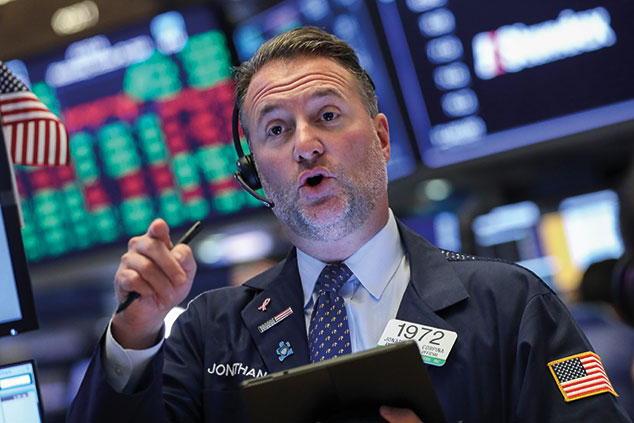
Doomsday delayed
The yield curve plots the interest rates on US Treasury bonds of different maturities. Under normal circumstances investors will demand higher interest rates for longer maturities. But if they think that a recession – and Federal Reserve interest rate cuts – lie in store, then long-term yields can fall and the curve become “inverted”. Over the summer the US government was paying less to borrow money for ten years than for two years.
Markets consider this a “powerful economic omen”, says The Economist. The last three US recessions were preceded, roughly one year before, by a yield curve inversion. Few economists think the “inversion itself causes a slowdown”. Rather, it is a sign that markets think short-term interest rates are too high and will need to fall. Yet the US central bank has “responded faster and more fiercely to an inversion than it usually does”, with three interest-rate cuts this year. That makes a recession next year seem less likely. Traders credit speedy Federal Reserve interest-rate cuts as well as better mood music from US-China trade talks for the improved sentiment, say Sam Goldfarb and Daniel Kruger for The Wall Street Journal. Nevertheless, an un-inverted yield curve “doesn’t mean the economy’s in the clear”. The yield curve has uninverted before previous recessions, including in the run-up to 2007. Uninversion doesn’t cancel out the original recession signal.
Is this time different?
Wall Street is “obsessed with the game of inversion-watching”, says Gillian Tett in the Financial Times. Yet a recent paper from the Bank for International Settlements suggests that markets are looking in the wrong place. The study suggests that government bonds are a less reliable predictor of downturns than “financial cycle metrics (such as the debt-service ratio, property prices, credit spreads and so on)”. While there are pockets of trouble in Chinese debt markets and US leveraged finance, the boffins do not think that the broader US financial cycle “signals a looming recession”.
“Wall Street has forecast nine of the last five recessions,” writes Jonathan Allum for The Blah! The yield curve may simply not be “the economic indicator it is cracked up to be”, especially because quantitative easing policies have distorted interest rates over the past decade. We will have to wait until 2021 to find out if markets “were on the money” about a coming recession.